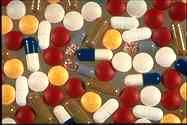
A research team from Massachusetts General Hospital (MGH) has shown that the majority of HIV-infected individuals who begin antiviral therapy during the earliest stages of their infection eventually can stop taking drugs and keep the virus under control with their immune systems alone. In the study reported in the Sept 28 issue of Nature, a group of eight such patients took part in closely supervised interruptions of their drug treatment. While the course for each participant has varied, all participants achieved at least temporary suppression of the virus for several months.
Currently five of the eight participants are still off drug treatment after 8 to 11 months, maintaining viral levels below the level at which treatment would be recommended. Of the three who resumed taking medication, two participants chose to restart and only one was required to reinstate treatment because of rising viral levels.
“This is the first time that anyone has shown that the immune system can successfully be manipulated to keep HIV under control,” says Bruce Walker, MD, director of the Partners AIDS Research Center at the MGH, the paper’s senior author. “We want to deliver two messages with this report: that diagnosing HIV infection and beginning antiviral treatment as early as possible can make a fundamental difference in the way the immune system handles the virus and that HIV treatment strategies based on the immune system – including vaccines – appear to have great potential. We also want to stress that persons currently taking the anti-HIV drug cocktail referred to as HAART [highly active antiretroviral therapy] should continue taking their drugs.”
Eric Rosenberg, MD, the paper’s lead author, says, “While we’re confident that someday we will be able to apply these finding to treatment of chronic HIV infection, there’s a lot more we need to learn about augmenting the immune system’s response against HIV. We also owe a huge vote of thanks to these patients who are pioneers in what could have been a risky venture.”
The current findings are an extension of a 1997 report in Science from the same team. That study found that starting HIV-infected individuals on antiviral treatment when they exhibit signs of acute infection – flu-like symptoms that appear within weeks of exposure to virus – both causes a drastic drop in the levels of virus in the blood and induces production of T helper cells specifically targeted against HIV.
T helper cells are the “generals” of the immune system, calling into play and directing the activity of T killer cells (also called cytotoxic T lymphocytes or CTLs). Individual T helper cells are targeted against the specific antigen signatures of viruses and bacteria, and when helper cells encounter their specific antigens, they become activated and quickly expand in number. Because HIV attacks activated T helper cells, it kills off the very cells that should coordinate the body’s antiviral defences, and as a result people with HIV usually have few or no HIV-specific T helper cells.
However, a small number of HIV-infected individuals have remained healthy for years without drug treatment, and Walker’s team found that these so-called long-term nonprogressors appear naturally to produce high levels of HIV-specific T helper cells. They went on to show that people treated at the acute stage of infection exhibited a very similar response, producing significant levels of HIV-specific T helper cells that seem necessary to keep the virus in check. Treatment with the drug cocktail appears to protect the T helper cells from becoming infected when they are activated in response to their first encounters with the virus.
But the 1997 study left open the question of whether early treatment could truly duplicate the long-term progressor phenomenon, in which the virus is controlled by the immune system alone. To test that hypothesis, the research team developed the current study led by Rosenberg. In the pilot phase of the study, one patient with a strong HIV-specific T helper cell response after early antiviral treatment volunteered to discontinue therapy. His viral levels soon rose above 10,000, the point at which the study protocol required reinstatement of treatment, and viral levels dropped again after therapy was resumed. However, when the patient had to discontinue treatment again because of an unrelated infection, his virus levels first rose to almost 40,000 but then dropped within 6 days to less than 500. The patient resumed antiviral therapy after recovery from his illness, but once again discontinued several months later. This time the increase in virus levels was less than in the earlier treatment interruptions and was followed by a rapid drop to less than 5,000, the level at which treatment is usually recommended. The patient maintained a low viral level – with one transient increase associated with a sore throat – for 130 days until he chose to resume therapy.
Based on this result, the research team enrolled eight patients in a revised study protocol, which required reinstatement of therapy if viral levels either stayed above 5,000 for 3 weeks or rose to 50,000 at any point. Viral levels on all patients rose within 17 days, but levels on three patients soon dropped below 5,000. Two of those patients have stayed off therapy and currently have viral levels below 200 after 9 to 11 months off therapy. The third patient chose to resume therapy after 3 months, even though his viral level never exceeded 5,000. He discontinued again about 3 months later and currently has a viral load below 300 more than 9 months into the second discontinuation.
In the other five participants, viral levels exceeded the established limits during the initial discontinuation, and treatment resumed. Levels of CTLs rose for all five following reinstatement of treatment, so they chose to stop drugs a second time. Their viral levels rose again but soon dropped below 5,000. Two of those patients remain off treatment with current viral levels between 200 and 300 after 8 and 9 months. Two other patients in this group chose to restart therapy after 4 and 5 months, although their viral levels did not require resumption. Only one patient was required to resume therapy when his viral level exceeded 5,000 for three weeks after about 5 months off therapy.
“Even if the viral loads on these patients rise tomorrow, we’ve shown that it is possible for the immune system to suppress HIV, something many believed could not be done,” Walker says. “Not only does this result open the door to investigating immunotherapies for HIV, but the same strategy also may be applied to other chronic viral infections, like hepatitis C, that currently escape immune system control.” The data also supports efforts to find and treat patients with acute HIV infection.
Several key questions remain to be addressed in future studies: how long antiviral therapy should continue before discontinuation is attempted, how long the viral suppression might be expected to continue, and whether any factors might predict who would or would not be successful with this treatment strategy. And beyond those questions lies the larger one of how this or other immune system based approaches can be applied to those not treated early in their infection.


















Comments are closed.